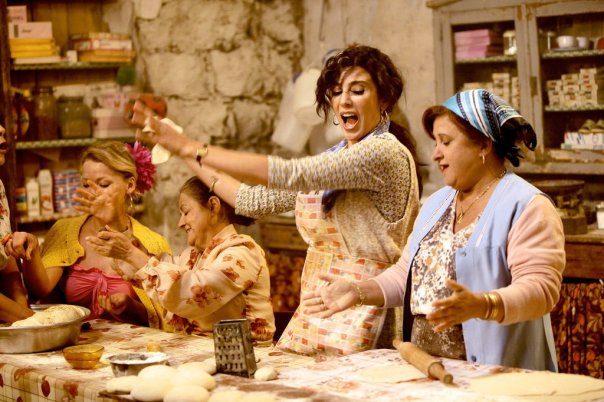Nadine Labaki’s Where Do We Go Now? (2011) represents Lebanon through gender. The conflict and strife in Lebanon is shown through the male characters and the hope for resolution through the female characters. Throughout the film, the discord between the men crescendos into chaos and madness while the women, both Christians and Muslims, scheme against the men in order to create harmony within the village, implying that the only way to end the cycle of hate is through the unity and sympathy found within femininity.

The symbolism presented through gender is not an accident, as the masculine-feminine dynamic is a common theme in Arabic film, such as in the Palestinian film Wedding in Galilee (1987). In Where Do We Go Now?, the men represent Lebanon in light of how it was and still is. Through the men is seen “a hardening of the boundaries between self and others, in an attempt to reduce vulnerability” (Fierke 473). For example, there is a scene in the film when a group of young boys are suspected to have replaced the holy water with chicken blood in the church. A Christian man proceeds to chase after the boys and knocks a crutch out from under a young boy, becoming violent and blinded by rage. Note the fact that it is a group of boys rather than a group of girls. He sees them, not as boys but as the “Other.” It is not until the man is met with femininity at the end with his converted wife that he falters in his blind anger towards the “Other.”

The women, on the other hand, represent the ideal Lebanon. They stand united “as a means of containing violence and fostering an ethic of empathy and compassion” (Sinno 618). They are, according to Lina Khatib, “constructed as observers and victims of war.” Even from the opening scene, the women are shown as a people united, not a people divided, through war and the grief that comes along with it. This initial scene shows the monotony and repetition of the grief they deal with on behalf of the men they love. In the film, the one of the women say that it is not their job to mourn them (the men). Through pain they have ascended above the religious divisions that the men are still constrained by. In the end the women even “sacrifice” their religion in order to save their men. The men then have to face the fact that if they continue to fight that they will have to fight the women that they love. The resolution comes from the realization that the men are fighting themselves, something that was not clear until the females, or femininity, came into play.

This masculine-feminine dichotomy is directly related to the civil strife in Lebanon. The masculine side shows the endless cycle of war and trauma and hatred. The feminine side, however, represents the possibilities that would be achievable through sympathy and a sense of community. Nadine Labaki is “preoccupied by the broader questions gripping the Middle East, such as Palestine” (Hillauer 138). She creates a film that not only represents the problems that Lebanon faces but those that all of the Middle East and even the world face. Labaki shows through her film that conflict should be approached through a the sympathetic approach of femininity rather than the destructive approach of masculinity. Only through community can the wounds of war begin to be healed.
Works Cited
Where Do We Go Now? Dir. Nadine Labaki. Perf. Nadine Labaki. Les Film Des Tournelles, 2011. DVD.
Fierke, K. M. “Whereof we can Speak, Thereof we must Not be Silent: Trauma, Political Solipsism and War.” Review of International Studies, vol. 30, no. 4, 2004, pp. 471-491, Cambridge Core, https://www.cambridge.org/core/article/whereof-we-can-speak-thereof-we-must-not-be-silent-trauma-political-solipsism-and-war/9553B8E69A96B520ABBF5301FB477B5A, doi:10.1017/S0260210504006187.
Hillauer, Rebecca. Encyclopedia of Arab women filmmakers. American Univ in Cairo Press, 2005.
Khatib, Lina. 2008. Lebanese Cinema: Imagining the Civil War and Beyond. London: I.B. Tauris.
Sinno, Nadine. “‘May the War be Remembered but Not Repeated’: Engendering Peace in Nadine Labaki’s Where do we Go Now?” College Literature, vol. 44, no. 4, 2017, pp. 615-643, https://login.proxy.lib.fsu.edu/login?url=http://search.ebscohost.com/login.aspx?direct=true&db=mzh&AN=2017874086&site=eds-live http://muse.jhu.edu/article/672849.